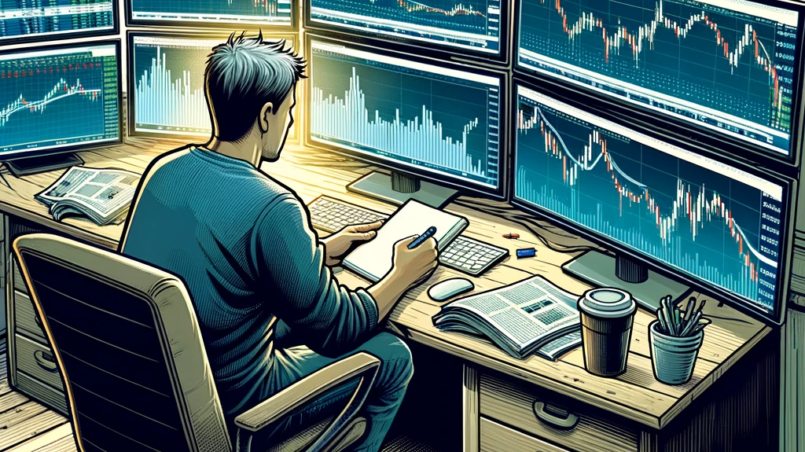Introduction
Paper trading serves as an essential stepping stone for new investors and a testing ground for seasoned traders to refine their strategies. It’s a simulation of actual trading, allowing you to engage in the stock market without the risk of losing real money. This blog post aims to shed light on both the advantages and disadvantages of paper trading, helping you make an informed decision about its role in your investment journey.
The Concept and Purpose
Paper trading isn’t just about pretending to buy and sell stocks; it’s a methodical approach to understanding the market dynamics without financial risks. This practice is especially beneficial for beginners who are not yet ready to commit their hard-earned cash to the unpredictable nature of the stock market.
Advantages
Real-World Experience Without Financial Risk
Gaining Practical Knowledge
By engaging in, you immerse yourself in the market’s fluctuations and trends, gaining hands-on experience that’s invaluable for a novice investor. This process allows you to understand market mechanisms without the stress of potential losses.
Self-Discovery and Market Sensitivity
Paper trading is a journey of self-discovery. It helps you understand your risk tolerance, investment style, and decision-making process under market pressures. Moreover, it gives you a feel for market trends and movements, enhancing your intuition for future investments.
Accessibility and Versatility
Ease of Starting
One of the most significant advantages of paper trading is its accessibility. You don’t need to open a brokerage account; numerous free online platforms offer paper trading facilities. These tools provide a safe and practical environment for experimenting with different strategies.
Testing the Waters of Stock Trading
Paper trading serves as a litmus test for your interest and aptitude in stock trading. It’s a practical way to ascertain whether stock trading aligns with your financial goals and interests without any monetary commitment.
Back Testing: A Key Form
Learning Through Historical Data
Back testing involves applying trading strategies to historical market data. This form is a valuable learning tool, as it allows you to see how your strategy would have performed in different market conditions.
This one is probably the fastest way to gain new experiences (eg. testing your strategies through good and bad times).
Disadvantages and Limitations
The Reality Gap in Paper Trading
Time Frame Limitations
Gaining expertise through paper trading has its limitations. Short-term engagement, like a month or even three to six months, often fails to provide a comprehensive view of market behaviors, which can be slow and cyclical.
Psychological Differences
The absence of real financial risk can lead to a lackadaisical approach to trading decisions. When there’s no “skin in the game,” the psychological impact is significantly different, often leading to less careful analysis and risk assessment.
Overlooking Trading Costs
Ignoring Real-Life Expenses
Paper trading can create blind spots regarding various trading costs, such as commissions, account maintenance fees, and transaction charges. These expenses can significantly impact profitability in real-world trading.
Personal Experience and Conclusion
My Tryst with Paper Trading
A Mixed Bag of Experiences
I have seldom used paper trading as it didn’t quite resonate with my learning style, finding it somewhat tedious compared to real trading. I preferred using a minimal amount of real money to get a genuine feel of the market.
The Pitfall of False Confidence
My successful stint in paper trading paradoxically led to a rude awakening when I transitioned to real trading. The overconfidence gained from paper trading can be misleading, potentially leading to aggressive and ill-considered bets in the real market.
Final Thoughts
No One-Size-Fits-All Approach
Ultimately, whether to engage in it or not is a matter of personal preference. It’s crucial to weigh its benefits and limitations in the context of your investment goals and learning style. Paper trading can be a valuable educational tool, but it’s important to remember that it’s a simulation, not a perfect replica of real-world trading.
Embracing the Journey
Whether you choose to paper trade or dive directly into the real market with small investments, the key is to remain committed to learning and adapting. The stock market is a complex and ever-changing environment, and success in trading requires patience, perseverance, and a willingness to continually evolve your strategies.


